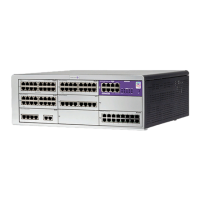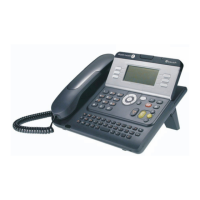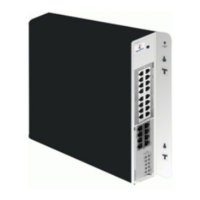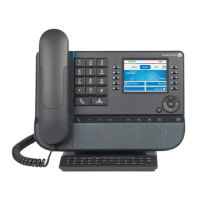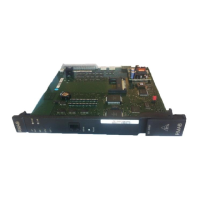Do you have a question about the Alcatel-Lucent OXO Connect Compact and is the answer not in the manual?
Document overview, symbols, and clauses.
Information regarding protection against radio frequency interference.
Safety rules, declarations, recommendations, and interface classifications.
Introduction to OXO Connect business communication server and its range.
Details on OXO Connect platform availability: Compact, S, M, and L.
Overview of the system installation and connection summary.
Details on available boards, options, and their connections.
Defines system service level, allowed devices, services, applications, and features.
Explanation of PRINC and CTI software keys and their file formats.
Details on CCO deployment, infrastructure, and VPN tunnel.
Establishing a VPN tunnel between OXO Connect and a VPN gateway.
Cloud-based software for remote call control and presence services.
Information on unit location and mounting.
Details on output connectors, cable types, and connection procedures.
Details on external power supply and battery implementation.
Configuration and commissioning of SIP phones.
Commissioning procedures for the 8082 My IC Phone.
Commissioning procedures for the 4135 IP Conference Phone.
Commissioning procedures for generic SIP sets.
Commissioning and initialization of 8018 DeskPhone.
Commissioning of Premium DeskPhones.
Commissioning procedures for the Alcatel-Lucent IP Touch 4018.
Commissioning of 8029/8039 Premium DeskPhones.
Commissioning procedures for the 4019 Digital Phone.
Hardware description, configuration, and external connections.
Hardware description, configuration, and external connections.
Hardware description, configuration, and external connections.
Detailed description of DECT bases, connection, and configuration.
Details on IP-DECT system, connection, and power.
Details on PIMphony personal productivity tool.
Details on PIMphony Touch client application.
Procedures for configuring stations and adding modules.
Details on My IC Plugin for Outlook® installation and configuration.
Platforms supported by ACD applications.
Default functions of programmable and virtual keys for deskphones.
Default functions of programmable and virtual keys for specific deskphone models.
Default functions for 8028/8029 Premium DeskPhone sets.
Default key functions for Alcatel-Lucent IP Touch 4018 Phone set.
Predefined data like dynamic routing and call overflow settings.
Procedure for starting up the system using a Premium DeskPhone.
Procedure to define the system type (Business or Hotel).
Procedure to enter the installation number.
Procedure to enter system IP addresses.
Procedure to choose a numbering plan.
Procedure to define DDI numbers for terminals.
Indicating the number of lines or B channels connected.
Operation modes for terminals and operator terminals.
Assigning a voice mailbox to installation terminals.
System identification number for mobiles (DECT).
Securing data transmission with an authentication code.
Choosing the installation language for stations.
Setting the metering unit cost for call cost calculation.
Entering the current date and time.
Menu to confirm resetting the system.
Procedures for starting up the system using OMC.
Procedures for downloading software packages.
Overview of OMC operating modes.
Advice on maintaining batteries for system backup power.
Recommendations for replacing batteries in PowerCPU EE boards.
Instructions for cleaning ventilation holes and addressing fan failures.
Procedure for replacing a faulty CPU board.
Procedure for replacing the chassis if master CPU or hardware fails.
Procedures for adding new boards or replacing existing ones.
Procedure for replacing the MSDB when it reaches end of life.
Procedure for replacing unsupported RAM with supported RAM.
| Model | OXO Connect Compact |
|---|---|
| Category | Server |
| Capacity | Up to 300 users |
| Maximum number of users | 300 |
| VoIP protocols | SIP, H.323 |
| Voice codecs | G.711, G.729, G.722 |
| Operating Temperature | 0°C to 40°C |
| Humidity | 10% to 90% non-condensing |
| Type | IP PBX |
| Connectivity | IP, Digital, Analog |
| Features | VoIP, Unified Communications, Voicemail |
| Network Interfaces | Ethernet |
| Power Supply | 100-240 VAC, 50/60 Hz |
| Weight | 4.5 kg |


